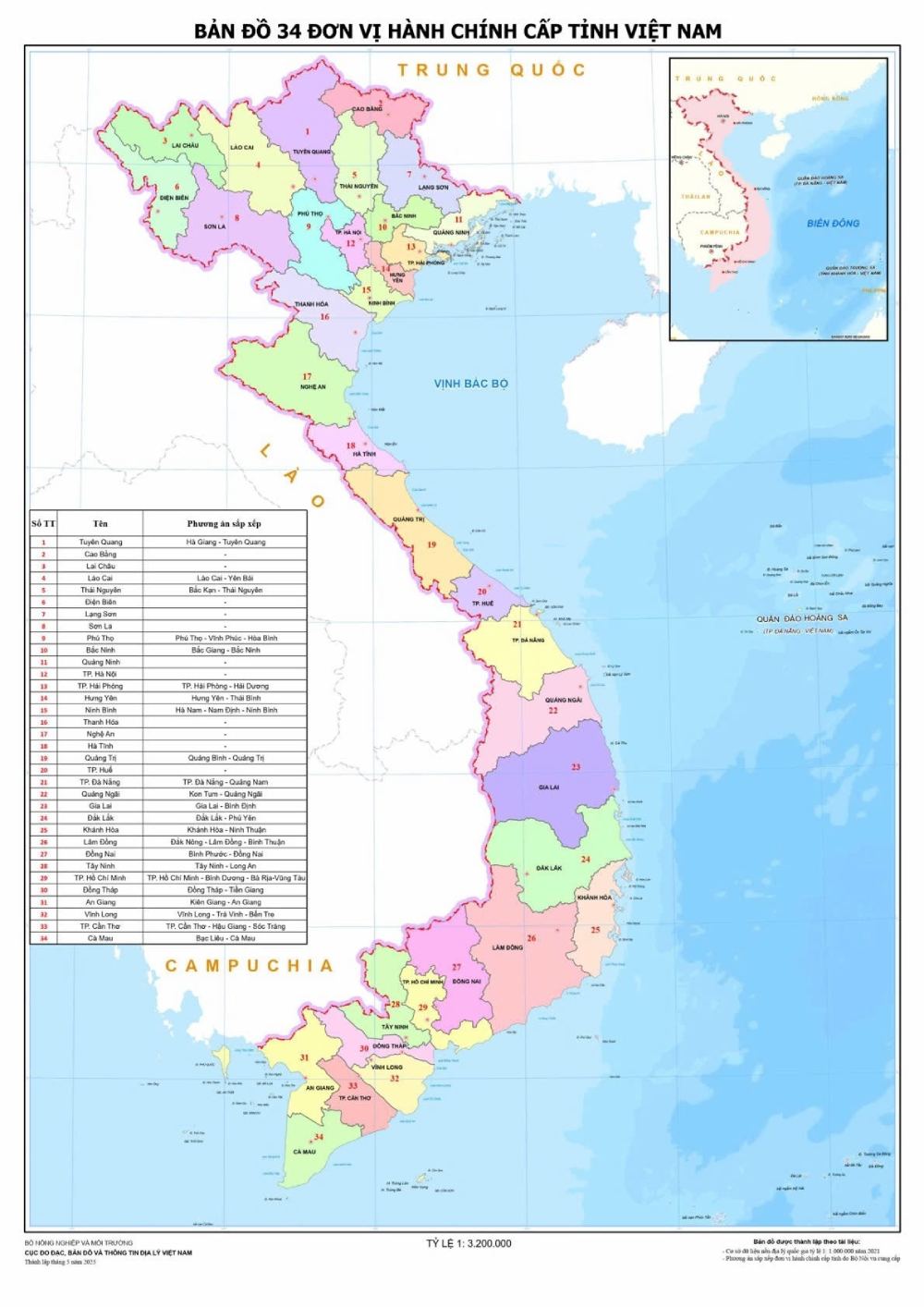On the morning of June 12, with the overwhelming majority of National Assembly deputies (461/465) pressing the button in favor, the National Assembly officially passed the Resolution on the arrangement of provincial-level administrative units in 2025.
The Resolution takes effect from the date of promulgation.
The administrative map published together shows that the whole country has 34 provinces and cities, including 6 centrally-run cities and 28 provinces.

After the arrangement, Tuyen Quang province has a natural area of 13,795.50 km2 and a population of 1,865,270 people.
After the arrangement, Lao Cai province has a natural area of 13,256.92 km2 and a population of 1,778,785 people.
After the arrangement, Thai Nguyen province has a natural area of 8,375.21 km2 and a population of 1,799,489 people.
After the arrangement, Phu Tho province has a natural area of 9,361.38 km2 and a population of 4,022,638 people.
After the arrangement, Bac Ninh province has a natural area of 4,718.6 km2 and a population of 3,619,433 people.
After the arrangement, Hung Yen province has a natural area of 2,514.81 km2 and a population of 3,567,943 people.
After the arrangement, Hai Phong city has a natural area of 3,194.72 km2 and a population of 4,664,124 people.
After the arrangement, Ninh Binh province has a natural area of 3,942.62 km2 and a population of 4,412,264 people.
After the arrangement, Quang Tri province has a natural area of 12,700 km2, population of 1,870,845 people.
After the arrangement, Da Nang city has a natural area of 11,859.59 km2 and a population of 3,065,628 people.
After the arrangement, Quang Ngai province has a natural area of 14,832.55 km2 and a population of 2,161,755 people.
After the arrangement, Gia Lai province has a natural area of 21,576.53 km2, population of 3,583,693 people.
After the arrangement, Khanh Hoa province has a natural area of 8,555.86 km2 and a population of 2,243,554 people.
After the arrangement, Lam Dong province has a natural area of 24,233.07 km2 and a population of 3,872,999 people.
After the arrangement, Dak Lak province has a natural area of 18,096.40 km2 and a population of 3,346,853 people.
After the arrangement, Ho Chi Minh City has a natural area of 6,772.59 km2 and a population of 14,002,598 people.
After the arrangement, Dong Nai province has a natural area of 12,737.18 km2, population of 4,491,408 people.
After the arrangement, Tay Ninh province has a natural area of 8,536.44 km2 and a population of 3,254,170 people.
After the arrangement, Can Tho city has a natural area of 6,360.83 km2 and a population of 4,199,824 people.
After the arrangement, Vinh Long province has a natural area of 6,296.20 km2 and a population of 4,257,581 people.
After the arrangement, Dong Thap province has a natural area of 5,938.64 km2 and a population of 4,370,046 people.
After the arrangement, Ca Mau province has a natural area of 7,942.39 km2 and a population of 2,606,672 people.
After the arrangement, An Giang province has a natural area of 9,888.91 km2 and a population of 4,952,238 people.
The provinces and cities that do not implement the merger include: Hanoi; Hue City; Lai Chau; Dien Bien; Son La; Lang Son; Quang Ninh; Thanh Hoa; Nghe An; Ha Tinh; Cao Bang.











